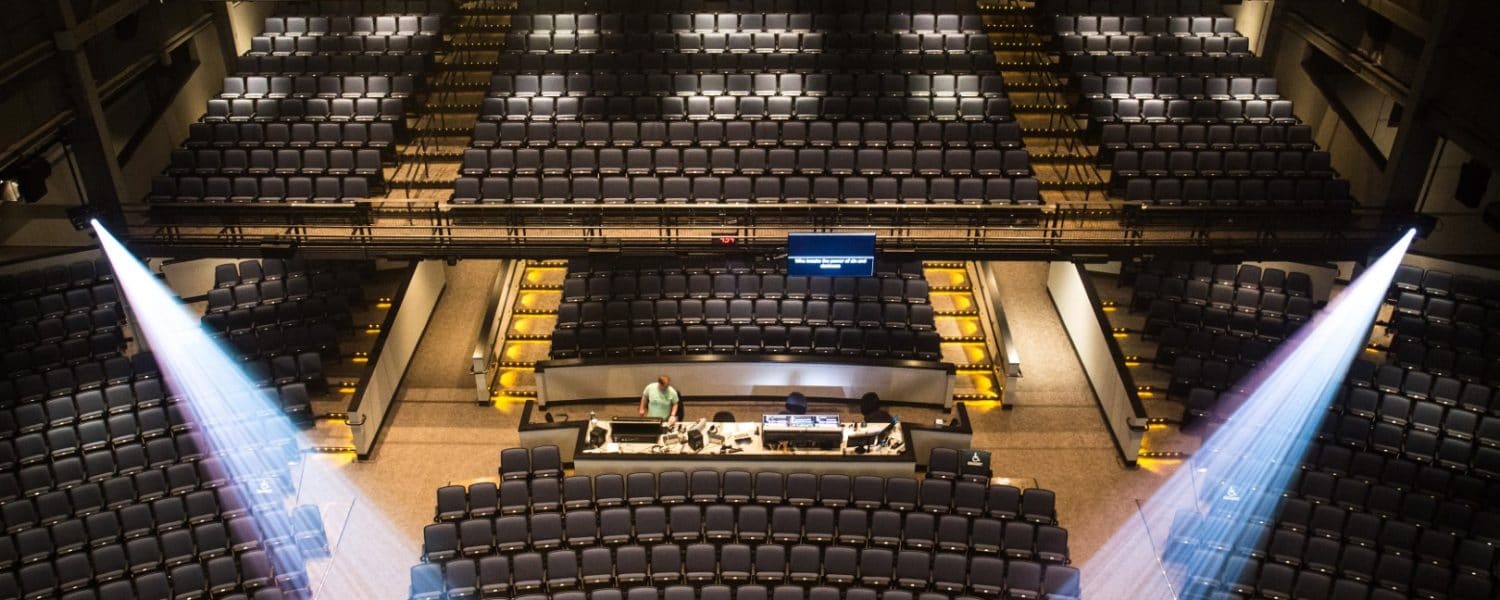The parts are casted, the scripts are all passed out, and the director is already giving…well, directions. That’s right, it’s the beginning of theater season at your school, and you and your thespian classmates are all a-buzz with excitement over the first play.
A lot goes into making a successful school production. From rehearsals to set building, it takes everyone working together to awaken that theater magic.
You may not hear anyone exclaiming over the “amazing stage lighting” after the show, but that doesn’t mean good lighting isn’t just as important as good acting.
Whether your school is performing a musical, drama, or comedy, a classic play or a contemporary one, here are five basic tips for those backstage renegades, the lighting crew, to follow:
1. Learn Your Play
Even though the lighting crew won’t be performing on stage, it’s still important for everyone to be thoroughly familiar with the play. Discussing how you interpret the action and dialogue in each scene helps decide what kind of lighting is needed to really bring the story to life for your audience.
2. Know Your Equipment
Before you start setting down a lighting plan, know what kind of lighting system your school has to work with. Get acquainted with each piece of equipment so you know everything that’s possible with your system.
Sometimes it’s necessary to replace old equipment. Other times, you may want to do a special effect that is beyond your system’s capabilities.
Thinking of a creative alternative is one option, but you can always try talking with your director to see if buying new or extra equipment is in your school’s budget.
3. Use Color to Set the Mood
Colored stage lighting dates back to Shakespearean times when light was filtered through red wine or brightly-hued silks. Later on, colored panels made of gelatin would become the method of choice. The term “colored gels” or just “gels” is still used in modern theater today, even though filters are now made of more durable materials.
Because the human psyche associates each color with a set of emotions and concepts, using colored lighting at key points in your play enhances the mood, or even foreshadows what’s about to take place.
Warm colors, such as red, orange, and yellow, relay energy. Red is associated with passion, love, or anger. Cool colors, which include green, blue, and purple, have a more subdued effect. Blue in particular is very calming. Colors also have connotations that are securely embedded in our minds, such as purple and royalty.
4. Add Patterns for an Extra Dimension to the Set
Gobos are attachments that turn solid lights into interesting patterns. They can be made from cut metal or colored glass. Not everything on your set needs to be represented by physical props. Gobos can simulate grass, trees, flowered wallpaper, a starry sky, or even a stain-glass window. Instead of building these features into your sets, save time and money by using patterned lights.
5. Incorporate Movement to Produce Special Effects
Plays require audiences to use their imagination, but that doesn’t mean you can’t give them a little help now and then. Bring a scene to life with gently falling rain, swirling snow, or lazily drifting clouds. Gobo rotators make such effects possible by allowing you to move light patterns across the set at various speeds and directions.
Prism rotators are another great lighting tool to create multi-dimensional effects. They let you overlap images and various colors for greater depth. Bouncing light off smoke created by fog machines is another great way to capture movement with your stage lighting.
Some scripts include lighting cues, while others are completely open for interpretation. Don’t be afraid to try new things and take risks with stage lighting, always bearing in mind the quality of proven techniques.
It takes everything and everyone working together to make your school production a show to remember. Center stage won’t shine without hard work backstage.
So, when it’s time for your lighting crew to do their thing, use these five tips to make opening night a dazzling event.
This information is courtesy of Vincent Lighting Systems, www.vls.com.





